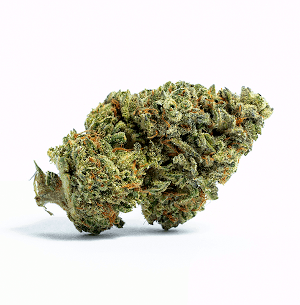Cannabis is a psychoactive drug that has been used for centuries for its medicinal and recreational purposes. While many people use cannabis without experiencing addiction, there is a subset of individuals who develop problematic use that can result in addiction. The relationship between cannabis and addiction is complex and multifaceted, and it is influenced by a variety of factors, including genetics, environment, and individual factors.
Cannabis addiction, also known as cannabis use disorder (CUD), is characterized by a compulsive pattern of cannabis use despite negative consequences. According to the Diagnostic and Statistical Manual of Mental Disorders, Fifth Edition (DSM-5), the prevalence of CUD among individuals who use cannabis is estimated to be around 9%. However, the likelihood of developing CUD is significantly higher among individuals who use cannabis regularly and at higher doses.
The addictive properties of cannabis are largely due to its main psychoactive component, delta-9-tetrahydrocannabinol (THC). THC interacts with the brain’s reward system, leading to the release of dopamine, a neurotransmitter associated with pleasure and reward. With repeated use, the brain adapts to the increased dopamine levels, leading to tolerance and withdrawal symptoms when cannabis use is discontinued.
The symptoms of CUD include cravings, difficulty controlling cannabis use, withdrawal symptoms, and continued use despite negative consequences. These consequences may include legal problems, relationship issues, and negative impacts on physical and mental health.
Risk factors for developing CUD include early onset of cannabis use, high frequency and duration of use, genetics, and environmental factors such as peer influence and stress. Individuals who have a family history of addiction may be more susceptible to developing CUD, as genetic factors account for up to 50% of the variance in risk for cannabis addiction.
Treatment for CUD typically involves a combination of behavioral therapy and medication. Cognitive-behavioral therapy (CBT) is a common form of treatment that focuses on changing thought patterns and behaviors related to cannabis use. Medications such as bupropion and naltrexone have also shown promise in treating CUD by reducing cravings and withdrawal symptoms.
It is important to note that while cannabis addiction is a serious issue, the vast majority of individuals who use cannabis do not develop addiction. Additionally, cannabis addiction is often considered to be less severe than addiction to other substances such as opioids or alcohol, and the withdrawal symptoms associated with cannabis use are generally less severe.
In conclusion, the relationship between cannabis and addiction is complex and influenced by a variety of factors. While cannabis addiction can be a serious issue for some individuals, it is important to recognize that the majority of individuals who use cannabis do not develop addiction. Treatment for cannabis addiction typically involves a combination of behavioral therapy and medication, and early intervention is key to successful treatment outcomes.



